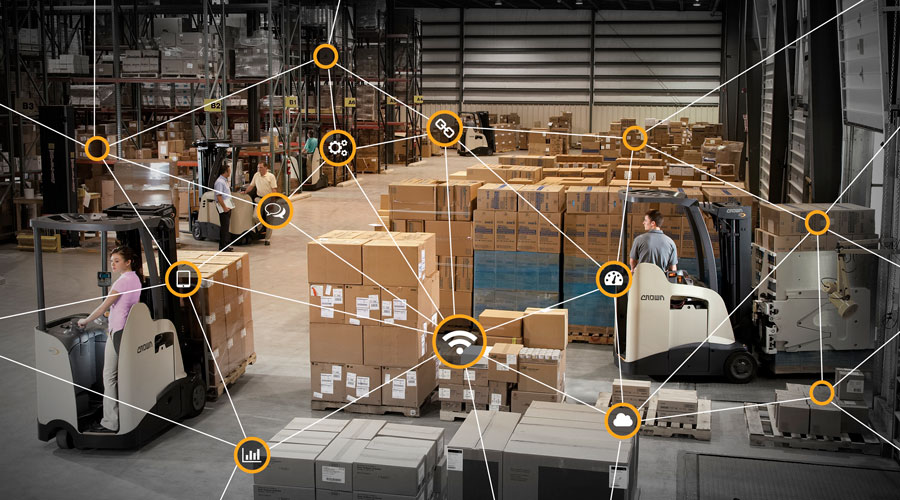Five Questions To Help You Focus on Analyzing the Right Data

As automated solutions continue to rise in the material handling industry, so does the amount of data we collect. Managing this “Big Data” can be overwhelming and divert your attention from achieving your operation's goals. However, approaching data with an informed and strategic focus gives your company a powerful tool to identify and resolve the most significant issues that hinder your operation’s efficiency.
As your facility becomes more connected, consider the following five questions.
1. What data do we want to gather and track?
Many companies try to track and gather too much data when they first embark on their data analytics journey. Some have speculated that those who collect everything may use less than 20% of what has been captured. A more manageable approach is to focus on one or two operational objectives, such as monitoring forklift impacts to reduce them. By tracking and analyzing a smaller amount of data, you can quickly determine responsibility and frequency and identify a course of action.
2. Do we want real-time data or historical data, or both?
It might be easier to start with real-time data because it doesn't require as much analysis. An example of a real-time data approach is receiving an alert whenever a forklift impact exceeds a certain threshold. If you want to review historical data to help confirm the assumptions derived from real-time data, then consider how your operation has evolved over time. Ensure that your provider and/or system has batch processing and data analytics capabilities. An example of a historical data approach is tracking the frequency of impacts to identify operators who may require additional training.
3. How will we receive the data?
Raw data can be difficult to decipher. Select a system and service provider that enables you to consolidate data and deliver it to those who need it in a useful format that supports informed decision-making. You should have processes and algorithms in place to help analyze data, ensuring that actionable information is shared with the right people so they can address issues accurately and efficiently. To streamline collection and analysis, ensure that your facility's network infrastructure has the capability and capacity to transfer data from equipment and sensors to your management system without manual intervention.
4. How will we act on the data?
Have a plan to establish accountability and initiate action. To achieve success, you must have the processes, resources, support (both internal and external) in place and the commitment to make decisions and take action based on the data. For example, if certain forklift operators consistently have a high number of impacts, managers can consider offering incentives and providing additional training to promote correct behavior.
5. How will we measure progress and success?
Review the data you are tracking and the initial goals you set out to achieve. Demonstrating the value of your data analytics through achievements, such as reduced impacts, increased efficiency or higher productivity, creates internal buy-in that can help instill confidence and provide the additional resources needed to tackle more complex challenges.
While effectively implementing data analytics can be challenging, asking the right questions will help you focus on capturing and analyzing data that can lead to meaningful changes in your operations that realize both short-term and long-term returns on your investment. Don’t focus on collecting everything while only using a small portion of the data. Instead, strive to define what is important to your operation and then utilize 100% of what you capture to provide meaningful results.
For more information on creating a connected facility and managing the data, download Crown's e-book Achieving Material Handling Connectivity.